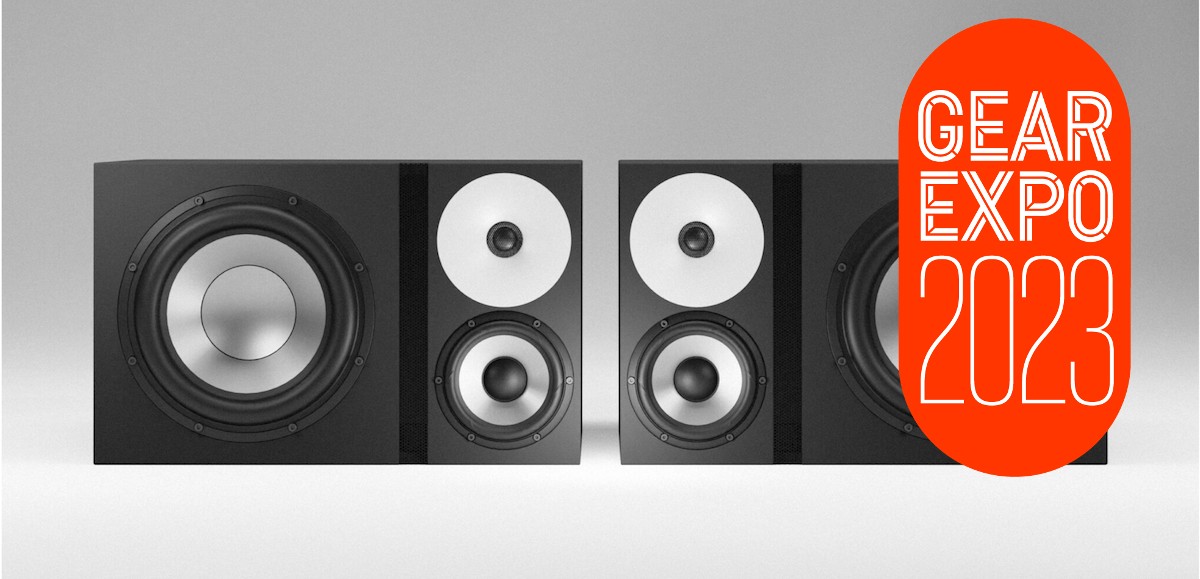
GEAR EXPO 2023: The studio monitor is the most important weapon in your fight against bad mixes. If you can't hear a bad mix, you can't correct it. Luckily, today's studio monitors have ramped up the tech and kept prices in check. Here are our best of the year ahead.
The studio monitor is one of the most basic pieces of studio technology out there, right? Wrong. Over the last few years, studio monitors have had to up their sound and design, keep costs within reason, and now feature all sorts of tech to help make your mixes even better.
We have a great selection of 2023 monitor newcomers that will be vying for your ears - and cash - this year. There's everything from budget to bank busting here, but you and your mixes would do well to check them all out.
Neumann KH 120 II
Could these first entries in our monitor guide be better than the best? According to their makers Neumann, yes they could.
The Berlin microphone and speaker expert's 2010-released KH 120 speaker was, according to us and many others, one of the finest studio monitors ever built. Honestly, if we'd built a speaker that good we'd have redefined the expression 'resting on your laurels'. Not this Berlin-based manufacturer, though.
Neumann's philosophy is to constantly strive for more, so it claims these new KH 120 IIs are even better.
The improvements are two-fold according to the company. Firstly, some new features and design elements have improved the sound. A new woofer means better SPLs and less distortion at the low end, while a 'linearized phase response' - with onboard DSP reducing phase issues caused by analogue filters - means better mids, accuracy and transparency.
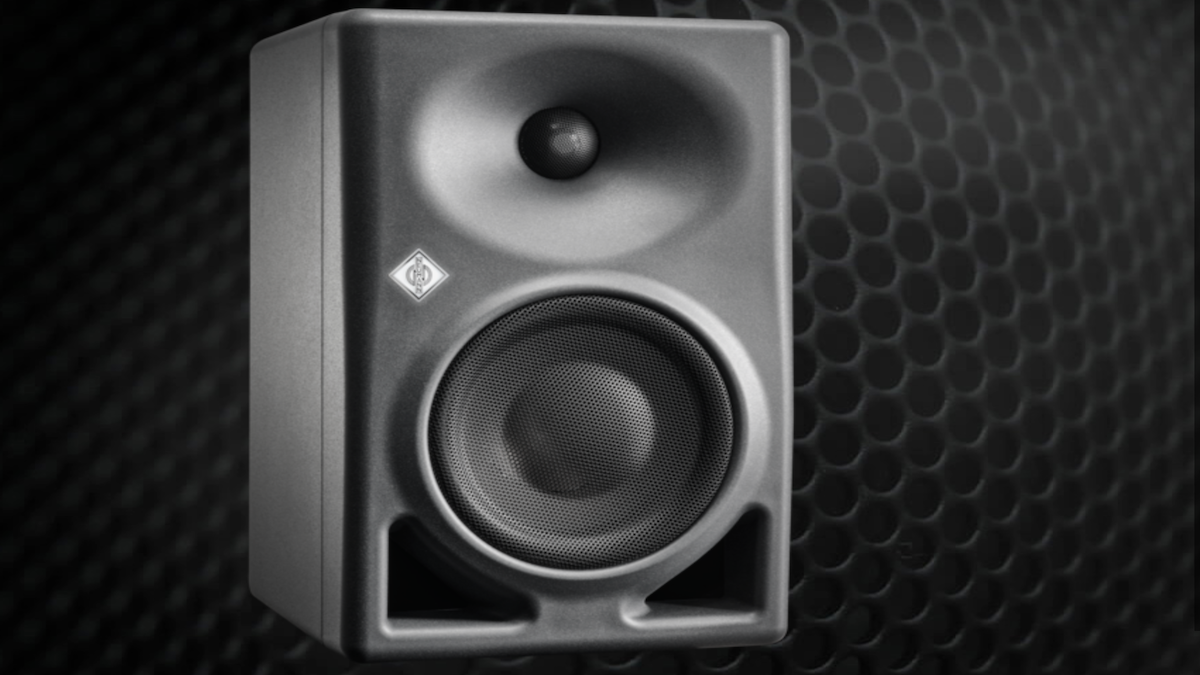
The second big addition - and something all the rage in studio monitoring at the moment - is the monitor's ability to compensate for its acoustic environment. Monitors such as Genelec's The Ones, and cheaper releases by IK Multimedia and KRK, enable speakers to self-adjust to compensate for acoustic issues in your room. The theory is that, by doing this, they still present you with a true version of your mix, no matter how rubbish your acoustics.
The KH 120 IIs do this using Neumann's MA1 hardware/software solution. This is sold separately (around $£250), but does mean that if these monitors sound as good as Neumann says, they should sound as good wherever you put them.
List prices are pretty decent given all of those claims - between $999 and $1250 a unit depending on your connectivity requirements.
There's more about the KH 120 IIs on the Neumann website.
Amphion One25A
At this year's NAMM show, Amphion announced an incredible looking - and costing - studio monitor, One25A. This is the company's first 3-way active monitor in 25 years.
The Finnish audio company is well-known as a maker of great hi-fi speakers, but has also long been involved in studio monitor design. Its speakers are championed by many great engineers and producers - including Jacquire King, Josh Gudwin, Mike Dean and Finneas O’Connell - but also those with big pockets, as most of these speakers don't come cheap. The latest Amphion One25A costs close to $15,000 (but that is for a pair).
Don't forget that you do get 25 years of research baked into that figure as well. Amphion says that the compact construction includes enough space to keep the bass and midrange drivers completely isolated to provide more clarity, and that the baffle around the mid-range driver has been designed to be acoustically symmetrical for more precise imaging. There’s also a hexagonal bass cabinet design which helps cut down distortion, so the bottom end should be rich but still precise. It sounds like here are clearly some fine design innovations here.
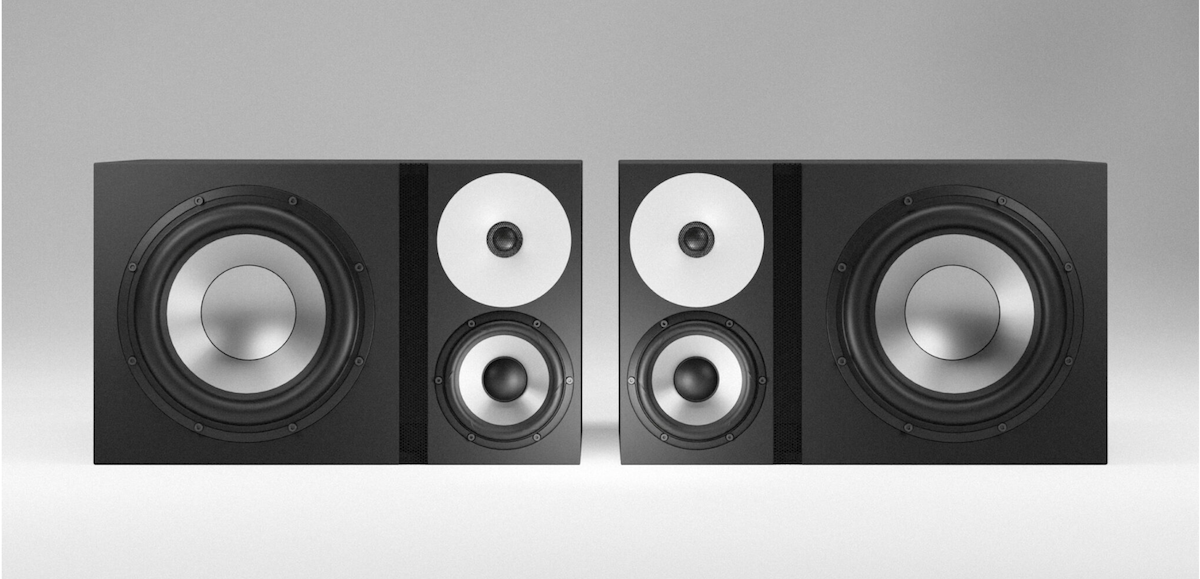
However, the most interesting question surrounding this launch is why it's taken Amphion so long to come up with a 3-way active speaker after designing 2-way (or passive) speakers for so long? The reason - we think - is simply because the 2-way ones were and are so good, and adding another driver wasn't previously seen as a priority.
Amphion CEO Anssi Hyvönen explains: “It must be remembered that One25A’s active 3-way high-resolution filter is simply a natural progression from the active 2-way filters that we have utilised in our Base systems since 2015. Our design philosophy has always been results- not technology-oriented. So, we use whatever approach we feel works best for a certain product.”
You can learn more about the speaker range at the Amphion website.
Eve Audio SC2070
Eve Audio produces a range of mid-priced and pro-level studio monitors that retail from about £500 per pair upwards. The SC2070 is a new 2-way addition to its flagship range, which also includes the 3-way SC3070 and 4-way SC4070.
The 20270's rear-ported design combines a 6.5” woofer with a new version of its AMT (Air Motion Transformer) ribbon tweeter. It’s compact enough to be a near-field, but with plenty of power under the hood and decent low-frequency extension, it could easily handle mid-field or multichannel duties.
The SC2070 build quality is excellent, and these monitors are also quite hefty for their size (9.4kg each). Sonically, they sound very open, and this has as much to do with the mid-range precision as it does with the higher frequencies.
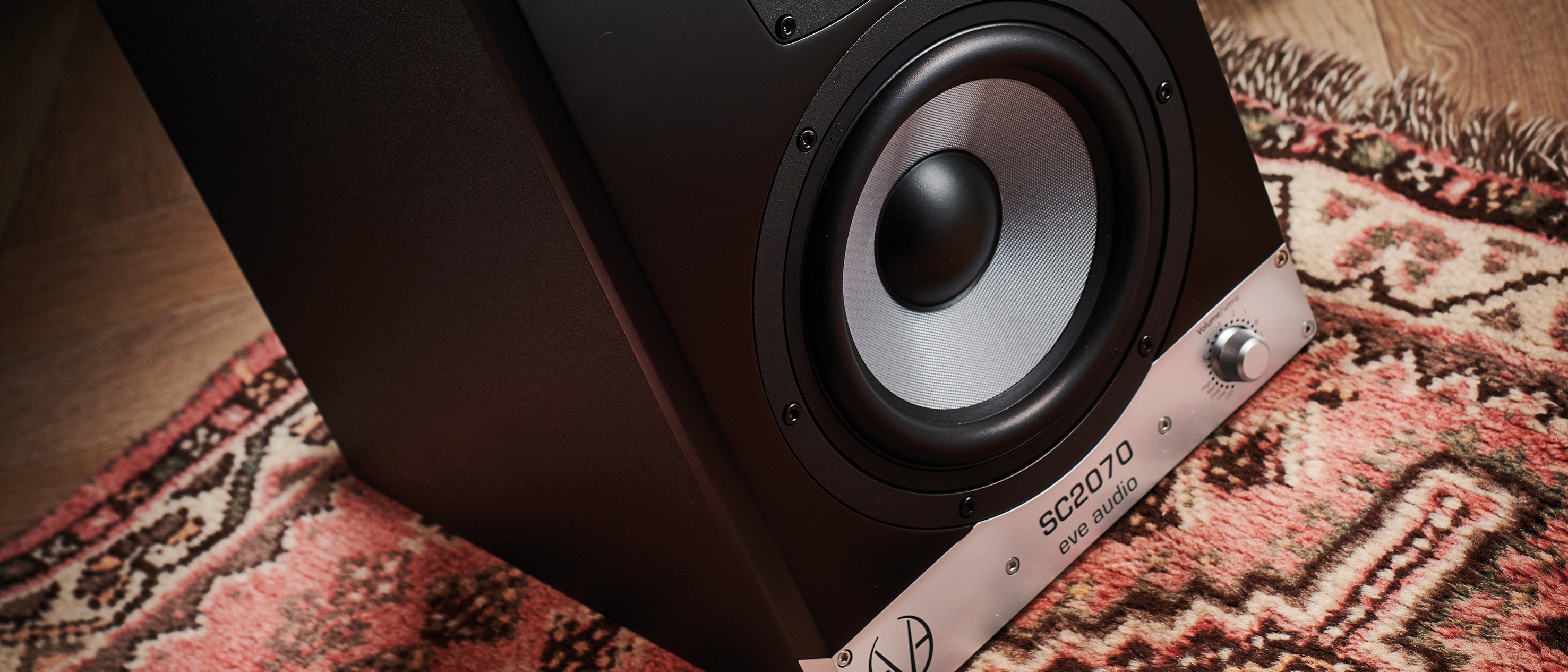
In terms of imaging, the sweet spot is also quite broad. One thing we would say is that the mid-range is quite forward, and this is particularly obvious for distorted electric guitars. We’d certainly use the monitor mid-band cut if we were regularly mixing rock tracks.
These are excellent monitors though, delivering a big, detailed, revealing sound. Significantly you’ve also got plenty of tweaking options if you need them. That said, they’re clearly quite expensive and at this price the competition is stiff, but they should definitely be on your audition list.
The SC2070 is a pro monitor that delivers an impressively big, open sound for its size, with plenty of EQ options to tailor it to your space.
The Eve Audio SC2070 costs €1,099 each, and you can read our full review here. Get more information from the Eve Audio website.
Antelope Audio Atlas i8
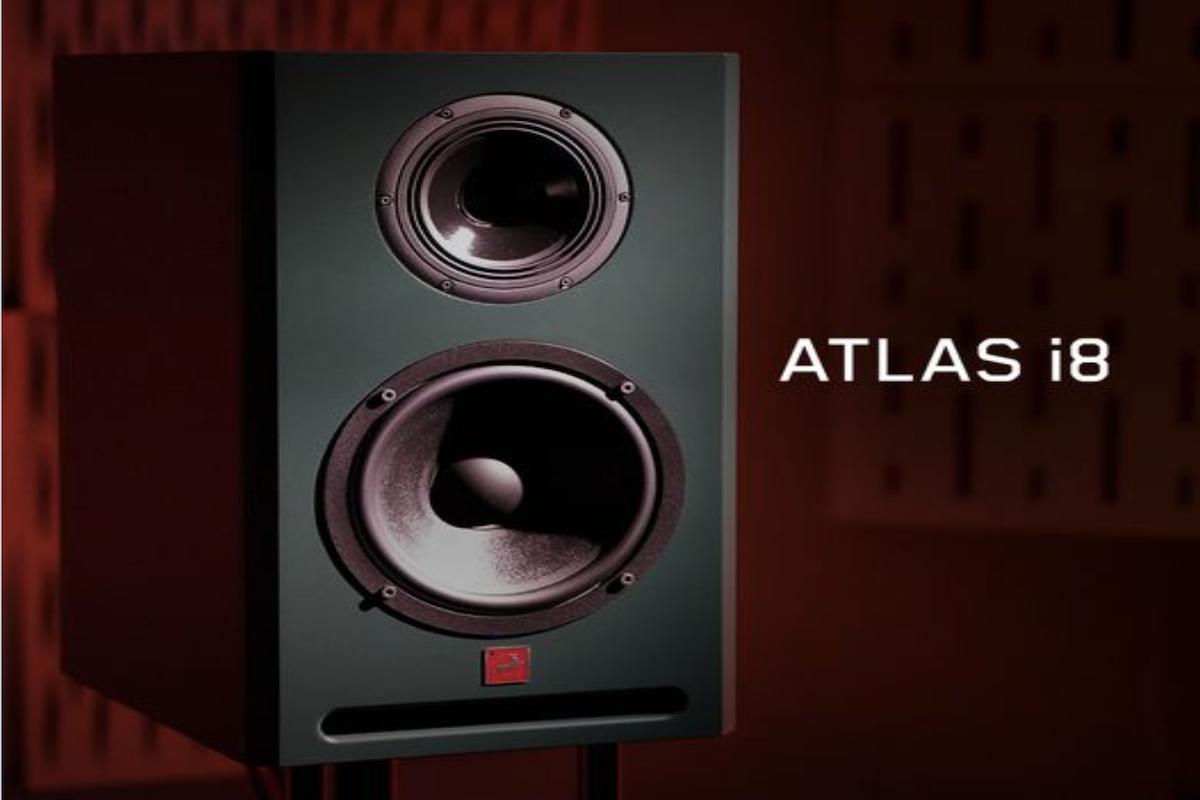
The Atlas i8 is Antelope Audio's first studio monitor, a company more well known for its interfaces. As these are digital monitors, some of the tech from those interfaces is in evidence here, namely the high-quality conversion technology.
The i8 is a relatively compact studio monitor but boasts a wide frequency range of 35Hz to 20kHz thanks to its 'isobaric' design. While not a totally new idea in speaker circles, it's a rarely used approach where two sets of low frequency drivers are placed in parallel to give the speaker an extended low end, and all from a smaller enclosure than you might expect.
The Atlas i8 also boasts its own Antelope-designed class D amp that delivers 200W to the woofers and another 100W to the mid and high-end drivers, plus a not inconsiderable SPL of 117dB. The latter two drivers are of a dual concentric design, so appear almost as one on the unit (where it's actually the tweeter built into the mid driver).
Because it is digital, the Atlas i8 has USB connectivity so can take a digital signal direct from your computer, or analogue analogue inputs with conversion of up to 192kHz. Other digital advantages mean you can control imaging, EQ and more directly via software.
The isobaric design makes these heavy speakers (around 24kg), so you're not going to want to shift them once placed, but fortunately you can use them either vertically or horizontally. Having an extra parallel bass driver will inevitably add to the cost; the Atlas i8s should be available in Q2 this year for around $2,500 each.
So far there's no extra information at the Antelope Audio website so, as we might say, watch that space for more as and when it comes.
KRK GoAux 3 and 4
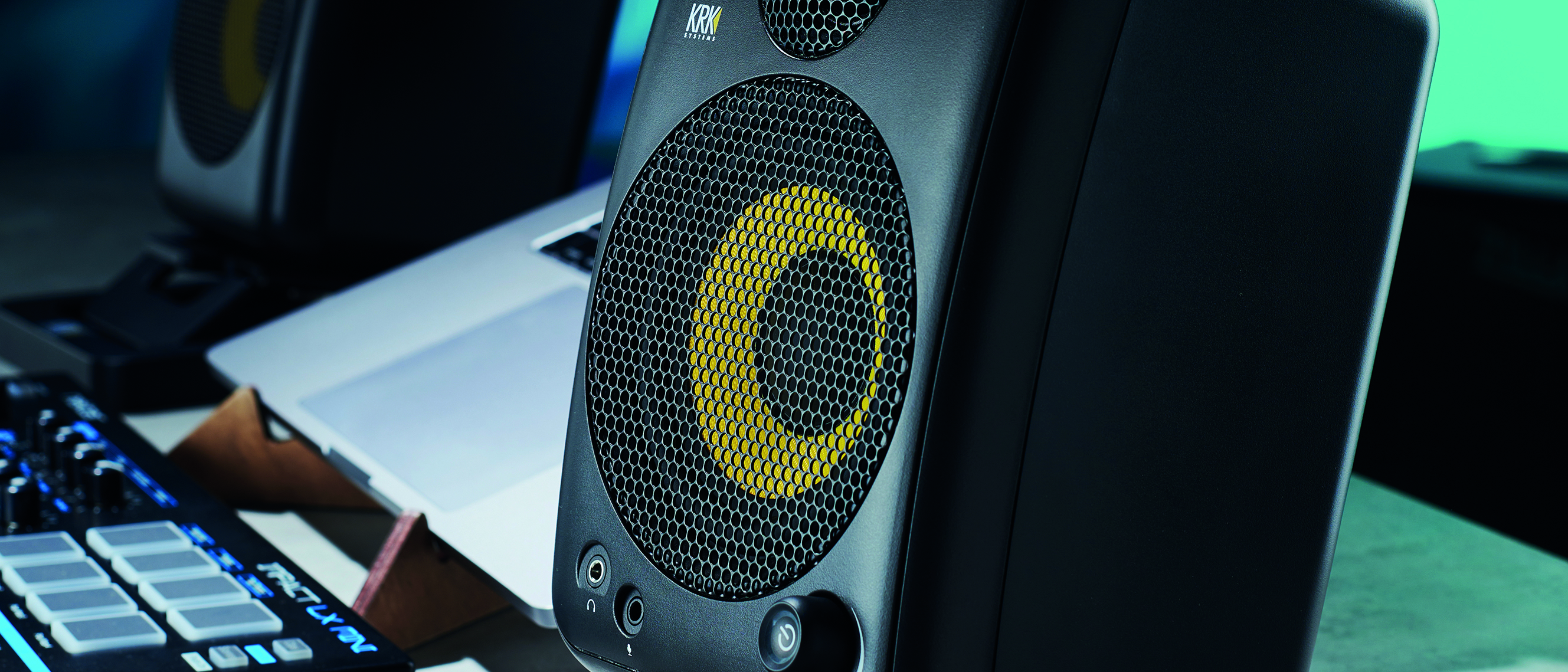
GoAux 3 and GoAux 4 are the new on-the-go speakers from KRK, and each kit comprises a pair of monitors in a padded travel case with space for all the extras.
The GoAux 3 and GoAux 4 use a 1” fabric dome tweeter coupled with 3” and 4” glass aramid woofers respectively, and the classic KRK yellow colour scheme is in full effect. Each speaker has an adjustable stand, is Bluetooth capable, has built-in EQ (HF and LF), onboard headphone output and front-mounted standby switch/level control.
For physical inputs, both designs include RCA and 1/8” minijack, and GoAux 4 also has 1/4” TRS jacks and USB (B type). So, armed with a regular A-type to B-type USB cable you can connect the GoAux 4 directly to a computer, selecting the KRK Realtek driver as your output device. The GoAux 4 also includes ARC - automatic room correction - which we’ll discuss below.
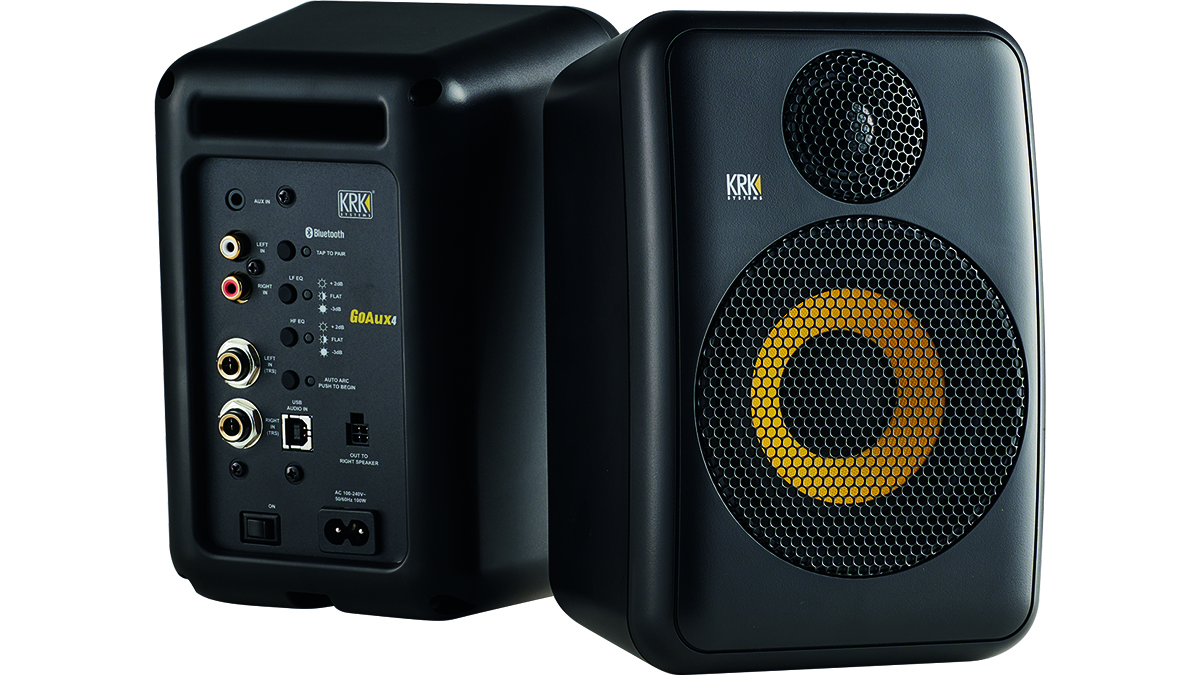
Much like other quality compact monitors we’ve tried, both GoAux models deliver a very workable sound. The high frequencies even when boosted using the EQ are not unpleasant and the mid and upper mid-range is reasonably forward.
GoAux 4 includes automatic room correction (ARC). In our space, the difference was noticeable but not dramatic, but the outcome made sense, particularly having heard the peaks and troughs in the low-frequency tone cycle.
Overall KRK has done a good job with GoAux, delivering compact and portable monitors with a very workable sound. GoAux is great for those on the move or short of space. The extra features are what take it into really noteworthy territory.
KRK's GoAux 3 and 4 systems cost £349 and £399 respectively. You can read our full review here and find our more from the KRK website.
IK Multimedia Precision 6
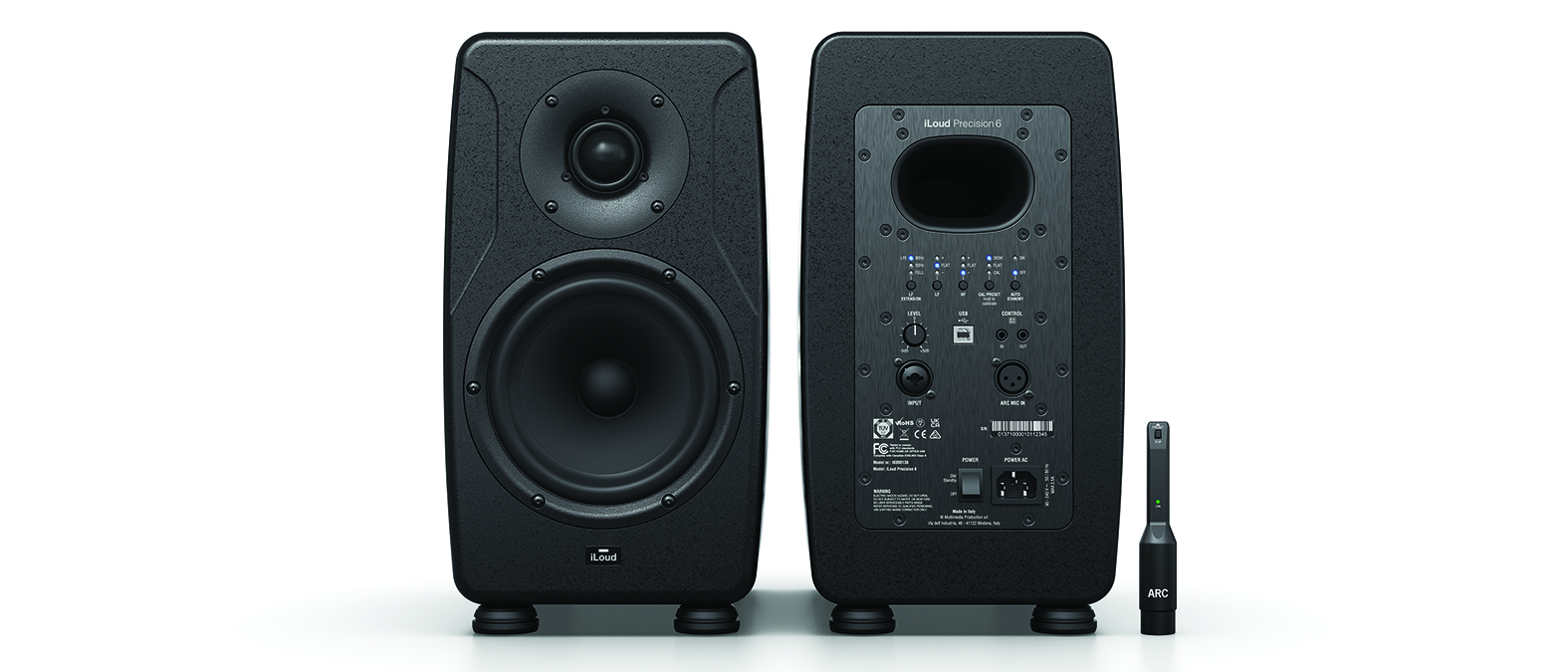
Finally, some bigger (and, it has to be said, much more expensive) monitors in the award-winning iLoud range from IK Multimedia.
iLoud Precision 6 is the middle monitor in the new Precision range. It has a great set of specs, with a wide frequency range (37Hz – 30kHz) with very little variation in colour across it (a +/- 1 dB accuracy) which means that the response is flat.
These speakers also employ the ARC System of calibration via a piece of software called X-Monitor to auto-adjust to your room.
When we set them up before employing the ARC system, we were already impressed with their controlled response while playing some trusted mixes of our own music plus our standard ‘speaker test’ tracks.
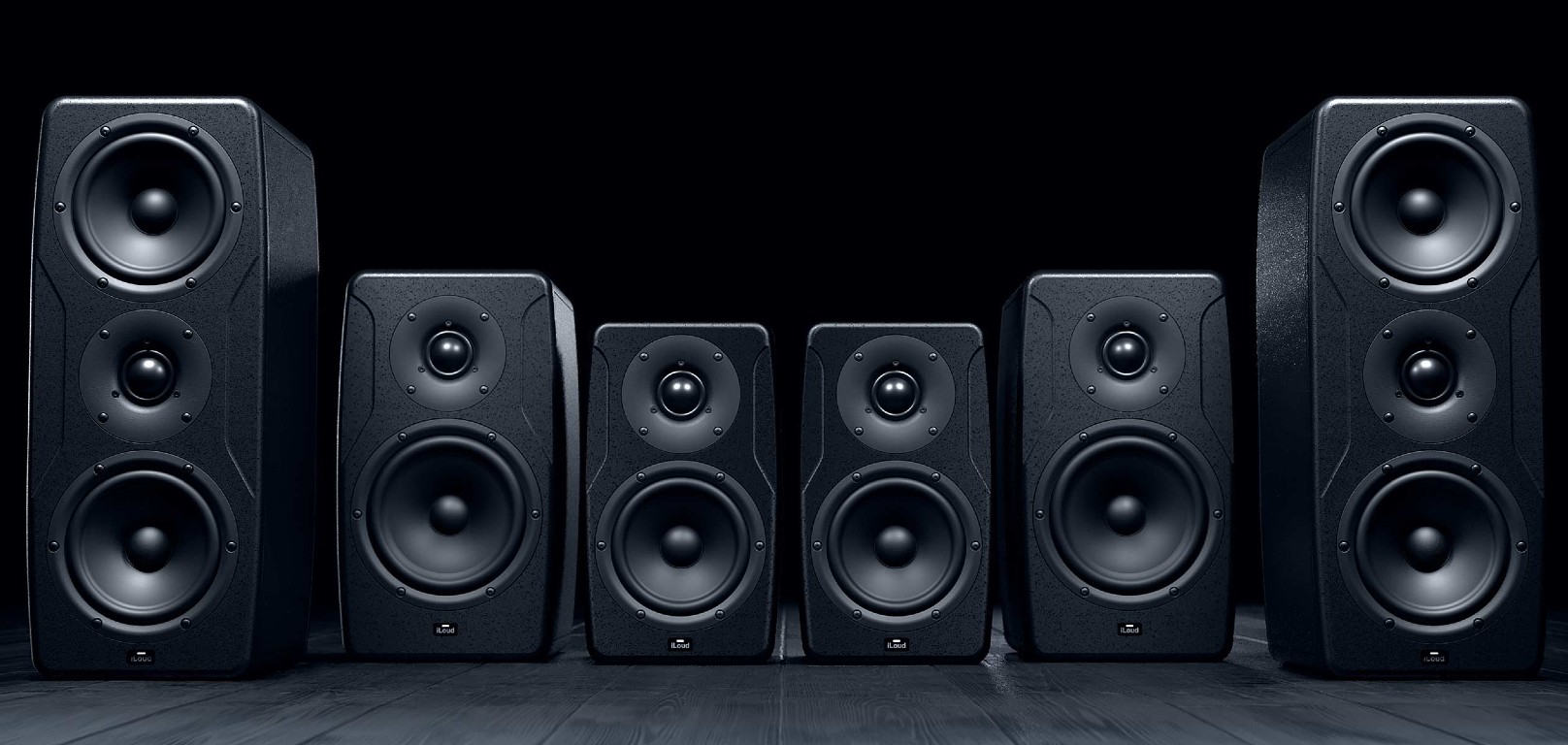
These Precision 6s really do deliver extra detail over and above our very decent reference monitors. We were impressed not only with the extras we were getting across the frequency range in our mixes but also the tightness - the fast response of the speakers to the transients in the music.
Post calibration we weren’t expecting to hear that much difference but the test revealed bass enhancements that we couldn’t initially detect - probably caused by their position on a desk and in a corner - which were then evened out in the adjustment process, resulting in a flatter and truer response.
We’d definitely recommend auditioning a set of Precisions - you will hear your music in a completely new light so they could revolutionise your mixing.
Precision 6 costs €999 a unit. You can read our full review here and there's more information at the IK Multimedia website.
Looking for more great new gear? Get all our round-up, news, features, tutorials, tips and more at our Gear Expo hub page.







